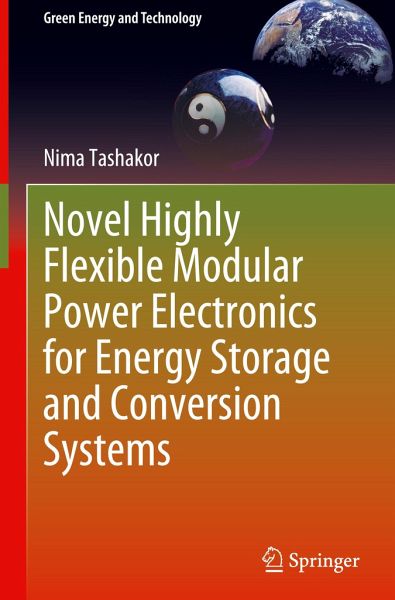
Novel Highly Flexible Modular Power Electronics for Energy Storage and Conversion Systems
Versandkostenfrei!
Versandfertig in 6-10 Tagen
136,99 €
inkl. MwSt.
Weitere Ausgaben:

PAYBACK Punkte
68 °P sammeln!
This book describes improvements to the electronics topology of current modular reconfigurable storages by integrating parallel connectivity, reducing the semiconductor count by eliminating irrelevant states, and improving the monitoring techniques through higher function integration. The author also discusses each topology's main advantages and disadvantages at the micro and macro levels. Moreover, the presented modeling of modular reconfigurable storage systems with different storages helps in better understanding the dynamics of the system.The book establishes novel optimum or near-optimum ...
This book describes improvements to the electronics topology of current modular reconfigurable storages by integrating parallel connectivity, reducing the semiconductor count by eliminating irrelevant states, and improving the monitoring techniques through higher function integration. The author also discusses each topology's main advantages and disadvantages at the micro and macro levels. Moreover, the presented modeling of modular reconfigurable storage systems with different storages helps in better understanding the dynamics of the system.
The book establishes novel optimum or near-optimum methods for exploiting the DOF (degrees of freedom) to achieve higher efficiency, more function integration, better balancing, or output quality. Additionally, through a detailed analysis of different modulation techniques, this book presents novel modulation methods, enhances the state-of-the-art, or in some cases, simplifies the complexity of implementation.
The concept of interconnected multi-port systems through integrating novel modulation techniques and the acquired understanding of the behavior of modular dynamically reconfigurable storages is explained. The presented concepts can significantly reduce the number of energy conversion stages as well as the final footprint of the system, reduce the number of required controlled semiconductors, and save costs. It also presents novel monitoring techniques based on estimators that can significantly reduce the number of required sensors and the required data-communication bandwidth.
The book establishes novel optimum or near-optimum methods for exploiting the DOF (degrees of freedom) to achieve higher efficiency, more function integration, better balancing, or output quality. Additionally, through a detailed analysis of different modulation techniques, this book presents novel modulation methods, enhances the state-of-the-art, or in some cases, simplifies the complexity of implementation.
The concept of interconnected multi-port systems through integrating novel modulation techniques and the acquired understanding of the behavior of modular dynamically reconfigurable storages is explained. The presented concepts can significantly reduce the number of energy conversion stages as well as the final footprint of the system, reduce the number of required controlled semiconductors, and save costs. It also presents novel monitoring techniques based on estimators that can significantly reduce the number of required sensors and the required data-communication bandwidth.












